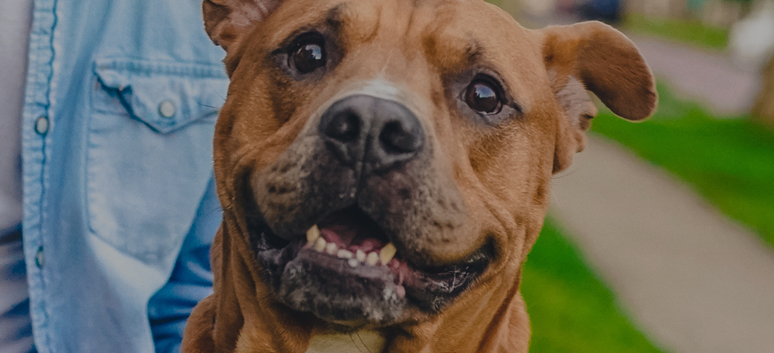
Dangerous Dogs
April 17, 2020 2:43 pmAs the entire UK is in lockdown because of the Corona virus, it is very likely that plenty of dog owners are spending more time at home than they usually would have. It is also very likely that there are more dog walkers out at the same time then ever before. This makes the chances of some owners being accused of possessing a dangerous dog even higher than normal which could end up with you being prosecuted and your dog being put to sleep.
If you have been accused of possessing a dangerous dog – this could be dangerous because of its breed or because of its actions – or you have been accused of having a dog that was out of control, it is crucial that you seek legal advice quickly. The police forces have the power through the Dangerous Dogs Act 1991 to seize your dog from you and your dog may be destroyed if a court decides that your dog is dangerous.
The Dangerous Dogs Act 1991
The Dangerous Dog Act 1991 was introduced in response to a number of attacks by dogs on children. The Act has been criticised by Christopher Hood as being an “unthinking reflex legislative response to [a] media hype”. The Act is often criticised for taking an approach of banning the breed of dogs rather than the deed. This suggests that the Act is putting the blame of the offence on the dog rather than its owner. A report was published by Battersea Dogs and Cats Home recently found that 86% of 215 dog experts said the way a dog was brought up by its owner – or breeder (73%) – are very important in determining their behaviour. It was found that 98% believed adding more breeds to the banned list would have no effect in preventing further dog attacks and 78% of experts supported the compulsory training of new dog owners.
Offence
When can I be prosecuted of owning a dangerous dog?
The Dangerous Dogs Act 1991 clearly states that any person can be prosecuted if your dog attacks a person, any kind of livestock, another dog, etc. You can also be prosecuted of this offence whether the incident happened in public, on private land or on your own property. If any of these circumstances have happened then you could be prosecuted for failing to control your dog and the penalties can include a lengthy prison sentence if a death or an injury has occurred.
What counts as a dangerous dog?
A dangerous dog can be dangerous either through its behaviour or if it falls under one of the breeds listed under the Dangerous Dogs Act 1991. In the Act, it states that a dog is dangerously out of control when it has injured another person, or has given another person reasonable belief that it may injure them. This leaves the actions of the dog open to debate. For example, a dog’s action of chasing, barking or jumping up at another person or child might not seem like a dangerously out of control dog to some people, but for others it can lead to a complaint being made against you and your dog.
According to the Dangerous Dogs Act 1991, the banned types of dogs are the Pit Bull Terrier, the Dogo Argentino, the Japanese Tosa and the Fila Brasiliero. In the Act, the word ‘type’ in relation to dogs has a broader meaning than ‘breed’. It is also stated in the Act that it is illegal to sell, abandon, give away or breed from any of these types of banned dogs. It is also stated that whether or not your dog is considered a banned type or not does not depend on its breed’s name, but on what the dog looks like. This means that if your dog has similar physical features to that of a banned type, for example a Pit Bull Terrier, then it is considered to be a banned type.
It is very likely that without proper legal representation your dog would be put down by the court – the question of whether the dog is destroyed is separate from whether you are guilty or not. When deciding if a dog should be destroyed the court is concerned with whether the dog is dangerous or not. Evidence of the dog’s usual behaviour will be vital as will evidence showing what happened to trigger the incident in question.
How should the word “dangerous” be defined?
It is worth remembering that the Act’s word “dangerous” should be defined by its ordinary everyday definition. Therefore, the dangerous allegation can be used when a dog has acted “dangerously” towards people or animals and applies whether the dog is in a private or public place.
The Act mentions acting “dangerously” towards other animals. What animals does this include?
In terms of animals, it is an offence for a dog to injure cattle or poultry or chases sheep. Section 7 of the Dogs Act 1906 defines ‘cattle’ as including horses, goats, mules, donkeys, sheep and pigs. ‘Poultry’ is not defined by the Act. A definition of ‘poultry’ is provided by section 3 of the Dogs (Protection of Livestock) Act 1953. However, in the Sansom v Chief Constable of Kent 1981 case, the case law states that it was in the nature of dogs to chase, wound and kill other small animals. In this case, the killing of an animal such as a rabbit would not considered to be ‘dangerous’.
Penalty
Under section 3 of the Dangerous Dogs Act 1991, an owner, or a person in charge of a dog, commits an offence if the dog causes reasonable apprehension to a person that they will be injured, whether or not they actually are injured. Unlike most offences, there does not have to be a criminal intent or recklessness for liability to arise. This means that a person can be guilty of an offence even if their dog was on a lead and had never behaved in such a way before.
Where no injury is caused the case may only be dealt with in the magistrates’ court and the maximum penalty is 6 months imprisonment and/or a fine of £5,000. The court has the power to order the dog be destroyed or kept under control and they may specify the measures for control. The court can also disqualify you from keeping dogs and can also order compensation to be paid to the victim.
If your dog causes injures a person or an assistance dog – for example a guide dog – then this is classed as an “aggravated” offence, which is more serious. The injury in question does not have to be a serious bite; it can be a scratch or even a bruise can be a reasonable injury to make a complaint. An “aggravated” offence can be dealt with by a magistrates’ court or the crown court. In these cases, the maximum prison sentence for a case involving:
- the injury or death of an assistance dog = 3 years
- the injury to a person = 5 years
- the victim dying as a result of the injury = 14 years
There may also be community penalties such as unpaid work, fines and compensation as well as the destruction of your dog.
Defence
The Dangerous Dogs Act 1991 states that the defendant is not guilty of an offence in a householder case. So, a defendant cannot be charged with an offence if the dog was dangerously out of control while in or partly in part of, or the entire building. However, the householder case can only be used if said building is a dwelling, forces accommodation or is both. Another defence is that if the victim was entering the building or part of it as a trespasser than the dog cannot be classed as dangerous. It is also a defence if defendant believed that victim of the offence was a trespasser who was entering or in the building.
The Act also states that if the defendant wasn’t in charge of the dog at the time of the offence, then if the defendant can prove that the dog had been left with someone who they reasonably believed to be a ‘fit and proper person’ to be in charge of the dog is a defence.
The Courts also must review the temperament and nature of the dog involved which includes the dog’s past behaviours. The courts also must decide whether they believe the owner of the dog – or the person who was in charge of the dog at the time of the offence – as a fit and proper person to have charge of the dog.
How can we help?
If you have been charged with an offence in respect of the Coronavirus Act 2020 then we can provide our expert defence team to represent you in court and help you avoid a potentially damaging criminal record.
We will look at all the facts of the accusation, from whether the conditions that make the public health officer’s orders lawful have been complied with correctly all the way through to whether your actions actually amounted to a criminal act.
Our team of litigators and advocates have many years’ experience analysing complex factual scenarios and applying them to often novel areas of law ensuring we get the best possible results for our clients.
Do not hesitate to call us on 07739795433 or email us on info@criminaldefencesoliticors.co.uk to get expert legal advice for you and your case.

